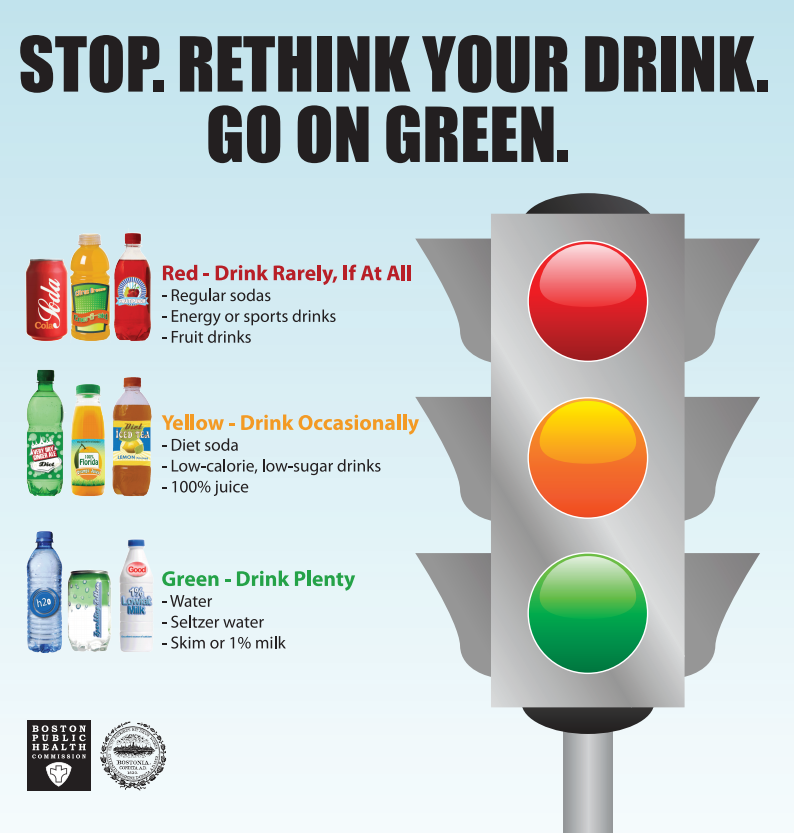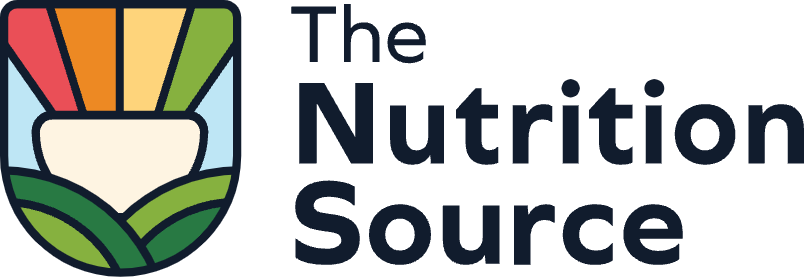
Americans consume on average more than 200 calories each day from sugary drinks (58,59)—four times what they consumed in 1965 (60)—and strong evidence indicates that our rising thirst for “liquid candy” has been a major contributor to the obesity and diabetes epidemics. (41,46,52-54,61)
Taking Action Against Sugary Drinks
Research shows that sugary drinks are one of the major determinants of obesity and diabetes, and emerging evidence indicates that high consumption of sugary drinks increases the risk for heart disease, the number one killer of men and women in the U.S.
Reducing our preference for sweet beverages will require concerted action on several levels—from creative food scientists and marketers in the beverage industry, as well as from individual consumers and families, schools and worksites, and state and federal government.
We must work together toward this worthy and urgent cause: alleviating the cost and the burden of chronic diseases associated with the obesity and diabetes epidemics in the United States.
Here are steps that each of these groups can take to address the issue:
Beverage manufacturers: Create beverages that have much less sugar.
Beverage manufacturers can make it easier for everyone to drink more healthfully by creating beverages that are less sweet. A good target: Beverages that have no more than 1 gram of sugar per ounce, and are free of non-caloric sweeteners (such as sucralose, aspartame, or stevia). This is about 70 percent less sugar than a typical soft drink.
We also encourage beverage manufacturers to offer smaller (8 ounce) single-serving bottles of sugary drinks, and encourage their sales channels to stock these smaller-sized bottles. If you read the fine print on the Nutrition Facts label, you’ll see that a standard serving of soft drink is 8 ounces, and that each 20-ounce bottle contains 2.5 servings.
Individuals: Make healthy drinking your personal priority.
Start by choosing beverages with few or no calories. Water is best.
You can also:
- Ask food companies to make sugar-reduced beverages, by calling their customer service numbers, or sending them a message on their Web site comment forms.
- Ask schools and workplaces to offer filtered water or functioning water fountains.
- Ask your local stores, schools, and workplaces to carry 8-ounce or 12-ounce containers of sugary drinks, to make it easier for you to choose a smaller serving.
It is also wise to wean yourself off of artificial sweeteners because of the unanswered questions about the relationship between diet drinks and obesity.
Food shoppers for the family: Don’t stock sugary drinks at home.
Nationwide data show that children and teens drink most of their sugary calories at home, so parents can help kids cut back by not stocking soda, fruit punch, or other sugary drinks in the house, and making them an occasional treat rather than a daily beverage.
Schools and workplaces: Offer students and workers several healthy beverage choices.
Healthy choices for school and workplaces include water and reduced-sugar beverages, as well as single-serving or 12-ounce containers. Schools and workplaces should also make sure that they have functioning water fountains or filtered water available.
Government: Require better labeling on sugary drinks, and scrap sugar subsidies.
The FDA should consider requiring companies to list the number of calories per bottle or can—not per serving—on the front of beverage containers. It should also consider creating a new labeling category for low-sugar beverages.
Under current labeling regulations, a beverage can be marketed as “reduced sugar” if it contains 25 percent fewer calories than the standard version of that beverage. (62)
A better threshold for low sugar beverages would be 1 gram of sugar per ounce, which is about 70 percent less sugar than a typical soft drink. Sugar-added beverages with more than 50 calories in an 8-ounce serving should carry a warning label about obesity and diabetes.
Government: Implement a soda tax.
Sugared beverages are categorized as food under the food stamp program and thus not taxed in some states. Yale researcher Kelly Brownell makes a strong argument for taxing sugary drinks in the New England Journal of Medicine. (63) Since sugared beverages carry no nutritional value and pose health risks to a consumer, many public health advocates have argued that it is logical to tax them like cigarettes or alcohol.
Government: Regulation of marketing to children.
Regulating advertising of sugary drinks targeted towards children – a vulnerable population – through television, the internet or other media is an important strategy in reducing consumption.
US Initiatives to Ban Sugary Beverages
New York City
In June of 2012, Mayor Michael Bloomberg of New York City proposed a ban on drinks sweetened with sugar that contain more than 25 calories per 8 fluid ounces. The ban would impact “super-sized” sodas larger than 16 ounces. The mayor cited the staggering rates of obesity in his proposed ban. Many public health officials and health professionals supported the mayor on his bold stand against soda, a major contributor to obesity. Others, however, argued that individuals must take personal responsibility for their beverage choices and their health, and that regulation would be ineffective because large quantities of soda could still be purchased in a few small containers, and the soda ban would not impact all vendors. For example, since the ban would only apply to movie theaters, fast food establishments, and food trucks, a consumer could still purchase an oversized soda at any food mart or grocery store.
Over the course of the summer and fall of 2012, the debate about Bloomberg’s soda ban raged on. In July, protestors of the ban marched – many while sipping large sodas – in City Hall Park. New York City’s Board of Health approved Bloomberg’s plan, and the new rules were set to take effect in March of 2013, but in the meantime the beverage industry and many restaurant owners filed a lawsuit. The proposed law was subsequently struck down in court in March 2013, and Mayor Bloomberg’s subsequent appeal was rejected by a state appeals courts on July 30, 2013.
The large sugary drink ban and subsequent debate raises many important public health questions surrounding access to foods and drinks that have been proven to increase obesity and disease risk. Skeptics remain wary that bans such as Bloomberg’s take away an individual’s right to make personal diet related decisions. Some believe that taking away this right may actually backfire by drawing excess attention to unhealthy items like large sodas and spurring a purchasing spree before they are possibly taken away.
Despite this opposition, there may be significant health benefits to limiting the sale of large sugary drinks. Sugar sweetened beverages are associated with obesity and many related health risks such as type 2 diabetes. New research also suggests that consuming sugar sweetened beverages also amplifies the genetic risk of obesity. We support bans like this because the obesity epidemic causes serious health consequences to individuals and places a large burden – both socially and economically – on aspects of our society such as healthcare. By limiting access to foods and drinks that have been proven to increase obesity and disease risk, individual consumers may be less likely to purchase these items and may instead shift towards healthier foods and drinks.
Boston
In a move to trim Boston’s rising obesity rates, Mayor Thomas Menino banned the sale and advertising of sugary drinks from city-owned buildings and city-sponsored events.
- The executive order, signed in 2011, calls for city departments to phase out regular sodas, sports drinks, and other high-sugar beverages from their vending machines, cafeterias, and concessions. (64)
- In their place, the city will offer healthier beverage options—among them, water, flavored seltzer, unsweetened coffee and tea, and diet drinks.
- Sugary drink marketing, from logos on vending machines to banners at events, will also be barred.
Boston, which barred soda and junk food from public school vending machines in 2004, is not alone in its broader beverage ban effort.
- Boston’s Carney Hospital also announced in 2011 that it would ban high sugar beverages from hospital grounds, making it the first hospital in the city to do so. (65)
- Cleveland Clinic banned high sugar drinks from its vending machines and cafeterias in August 2010. (66)
- San Francisco, (67) Los Angeles County, (68), and other cities have also curtailed sugary drink sales on municipal property.
The goal of these bans is to make healthy drinks easy choices—and to counter the billions of dollars beverage manufacturers spent each year on soft drink marketing. That’s just the type of environmental support Americans need to curb their taste for sugar-loaded drinks, public health experts say—and in turn, potentially curb the obesity epidemic.
“There is abundant evidence that the huge increase in soda consumption in the past 40 years is the most important single factor behind America’s obesity epidemic,” says Dr. Walter Willett, chair of the Dept. of Nutrition at Harvard School of Public Health, who joined Mayor Menino at the soda ban’s announcement. “These steps will greatly assist in creating a new social norm, in which healthier beverages are the preferred choice.”
The city has also unveiled a “traffic-light” style promotional campaign to help consumers choose healthier beverages based on their sugar and nutrient content. The campaign, which groups beverages into “red” (limit), “yellow” (drink occasionally), and “green” (best choice) categories, is similar to the “How Sweet Is It” beverage guidelines developed by the Harvard School of Public Health’s Department of Nutrition in 2009.
See Boston’s traffic light brochure and poster on how to choose healthy beverages.
References
41. Vartanian LR, Schwartz MB, Brownell KD. Effects of soft drink consumption on nutrition and health: a systematic review and meta-analysis. Am J Public Health. 2007;97:667-75.
46. Malik VS, Popkin BM, Bray GA, Despres JP, Willett WC, Hu FB. Sugar-sweetened beverages and risk of metabolic syndrome and type 2 diabetes: a meta-analysis. Diabetes Care. 2010;33:2477-83.
52. Schulze MB, Manson JE, Ludwig DS, et al. Sugar-sweetened beverages, weight gain, and incidence of type 2 diabetes in young and middle-aged women. JAMA. 2004;292:927-34.
53. Palmer JR, Boggs DA, Krishnan S, Hu FB, Singer M, Rosenberg L. Sugar-sweetened beverages and incidence of type 2 diabetes mellitus in African American women. Arch Intern Med. 2008;168:1487-92.
54. Malik VS, Schulze MB, Hu FB. Intake of sugar-sweetened beverages and weight gain: a systematic review. Am J Clin Nutr. 2006;84:274-88.58. Wang YC, Bleich SN, Gortmaker SL. Increasing caloric contribution from sugar-sweetened beverages and 100% fruit juices among US children and adolescents, 1988-2004. Pediatrics. 2008;121:e1604-14.
59. Bleich SN, Wang YC, Wang Y, Gortmaker SL. Increasing consumption of sugar-sweetened beverages among US adults: 1988-1994 to 1999-2004. Am J Clin Nutr. 2009;89:372-81.
60. Duffey KJ, Popkin BM. Shifts in patterns and consumption of beverages between 1965 and 2002. Obesity (Silver Spring). 2007;15:2739-47.
61. Malik VS, Willett WC, Hu FB. Sugar-sweetened beverages and BMI in children and adolescents: reanalyses of a meta-analysis. Am J Clin Nutr. 2009;89:438-9; author reply 9-40.
62. National Archives and Records Administration’s Office of the Federal Register. Electronic Code of Federal Regulations. Title 21: Food and Drugs. Part 101: Food Labeling. Subpart D. Specific requirements for nutrient content claims. 101.60 Nutrient content claims for the calorie content of foods.
63. Brownell KD, Frieden TR. Ounces of prevention–the public policy case for taxes on sugared beverages. N Engl J Med. 2009;360:1805-8.
64. Executive Order of Mayor Thomas Menino. An Order Relative to Healthy Beverage Options (PDF). April 7, 2011.
65. Business Wire. Press Release: Carney Hospital to Ban the Sale of Sugar Sweetened Beverages. April 7, 2011.
66. Cleveland Clinic. Who We are and What We Do: Wellness Timeline. About the Wellness Institute.
67. Office of the Mayor Gavin Newsom. City & County of San Francisco. Executive Directive 10-01: Healthy Food & Beverage Options in Vending Machines.
68. Los Angeles County Board of Supervisors. Los Angeles County Food Policy. Vending Machines, Fund-Raising, and County-Sponsored Meetings. Approved by the Board of Supervisors August 8, 2006 and ammended August 18, 2009.

